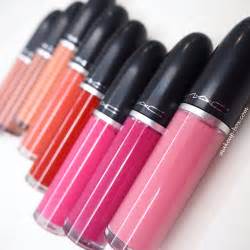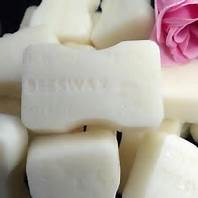Toxic Beauty - Cocktails and Low Doses









Toxic Beauty - Cocktails and Low Doses
Although cosmetics manufacturers have asserted that the chemicals used in their products are added in very low concentrations, chemicals in combination can cause undesirable additive effects and this is an area that has not been fully investigated.
The cocktail effect is used to describe a phenomenon where more than one chemical is combined either in a product or in the body, producing a total toxic effect far greater than would be the case for the sum of the individual chemicals.
It is not enough to simply say that low levels of exposure to certain chemicals are safe; as the European environment Agency (EEA) has noted. It is very difficult to know, or predict, what the harmful level of exposure to chemicals may be, and then to ensure that actual exposures in the environment are kept below those levels.
Another potential flaw in the 'low concentrations are safe 'argument has come to light courtesy of the low-dose phenomenon. first reported in the 1900s, which is contrary to one of the intrinsic tenets of toxicology that 'the doses makes the poison'.
It has been shown that in certain circumstance slow doses of compounds can cause more damaging side effects than higher doses, including the disturbance of normal hormone functions. Some individuals will react more severely to low doses of substances than others, and again, babies and children are are more likely to experience adverse effects.
Critics of this theory have argued that its findings are based on a few small-scale studies conducted on experimental animals that have demonstrated reproductive or development effects. The US Environmental Protection Agency (EPA) asked the National Toxicology Program (NTP)to carry out a scientific peer review of studies relevant to the low-dose theory and the peer review panel concluded that although there were 'credible studies supporting a low dose effect, the effects were dependent on the compounds studied and the endpoint measured '. In 2002 the EPA stated that routine testing of substances for the low-dose effect in the Endocrine Disruptor Screening Program would be 'premature.
In December 2004, however, there were 115 published in vivo studies (i.e. conducted on the living tissue of living organism) pertaining to the low-dose effects of bisphenol A (widely used in plastic packaging for food and cosmetic containers) alone and nearly 82 per cent of these reported significant effects.
Other animal and cell-based have also demonstrated the low-dose effect of bisphenol A. Given that there are other examples of substances shown to cause adverse effects at low doses it is quite clear the 'the dose makes the poison ' is a gross over-simplification of the complex world of chemical reactions and interactions.
DID YOU KNOW?
Oil-free moisturizers are based on humectants, which are used in moisturizing creams to ensure that the product does not dry out and to attract moisture from the atmosphere to the stratum corneum.
The skin remains moist providing there is adequate moisture in the air. However, humectants draw moisture from anywhere, so in a dry environment a cosmetic product containing humectants will absorb moisture from the nearest source, in other words the lower epidermal layers of the skin. If the humectants draw too much water from the skin they can actually dry it out.
Reference: Toxic Beauty: Dawn Mellowship
Articles-Latest
- Skin tags: Why they develop, and how to remove them
- So That’s Why Your Skin Gets Crepey As You Get Older
- Eye Infection from False Eyelashes
- Teeth stain removal and whitening solutions
- Benefits of collagen for skin
- Why vitamin E should be part of your skincare regime
- Can gray hair be reversed?
- Hair loss affects 1 in 10 women before the menopause – here’s how to treat it
- Conscious ageing and Black skin: What happens when Black does crack?
- Your skin color may affect how well a medication works for you — but the research is way behind
- The C word Cancer
- Astringents
- How does light therapy work? The science behind the popular skincare treatment
- The Most Offensive Fashion Police Criticisms of All Time
- Everything you need to know about lip filler migration, as told by the experts
- Pig semen and menstrual blood – how our ancestors perfected the art of seduction
- Everything you need to know about benzoyl peroxide
- We've bleached, relaxed, and damaged our hair to make ourselves look more white
- Will this be the year that facial filler is cancelled?
- Shock of the old: 10 painful and poisonous beauty treatments
Cosmetic ingredients
LOGIN
Who's On Line
We have 105 guests and no members online
Articles-Most Read
- Home
- White Bees Wax
- Leucidal
- Cosmetic Preservatives A-Z
- Caprylyl Glycol
- Cosmetics Unmasked - How Safe Are Colorants?
- Cosmetics Unmasked - Choosing Ingredients
- Cosmetics Unmasked - Colorants And Fragrances
- EcoSilk
- Toxic Beauty - Who's Looking At Cosmetics?
- Cosmetics Unmasked - Fragrances
- Microbes and Cosmetics
- Chemicals Lingering In The Environment
- Microbes and Safety Standards
- Yellow Bees Wax
- Potassium Sorbate
- Toxic Beauty - Hazardous To Your Health
- What's Happening in the USA - Cosmetic Regulations - Toxic Beauty
- Synthetics In Cosmetics - The Industry Fights Back
- Fresh Goat's Milk Soap
- Active Ingredients
- Cosmetics Unmasked - Listing Cosmetics
- Toxic Beauty - Cocktails and Low Doses
- Natural Waxes A-Z
- Natural Butters A-Z



